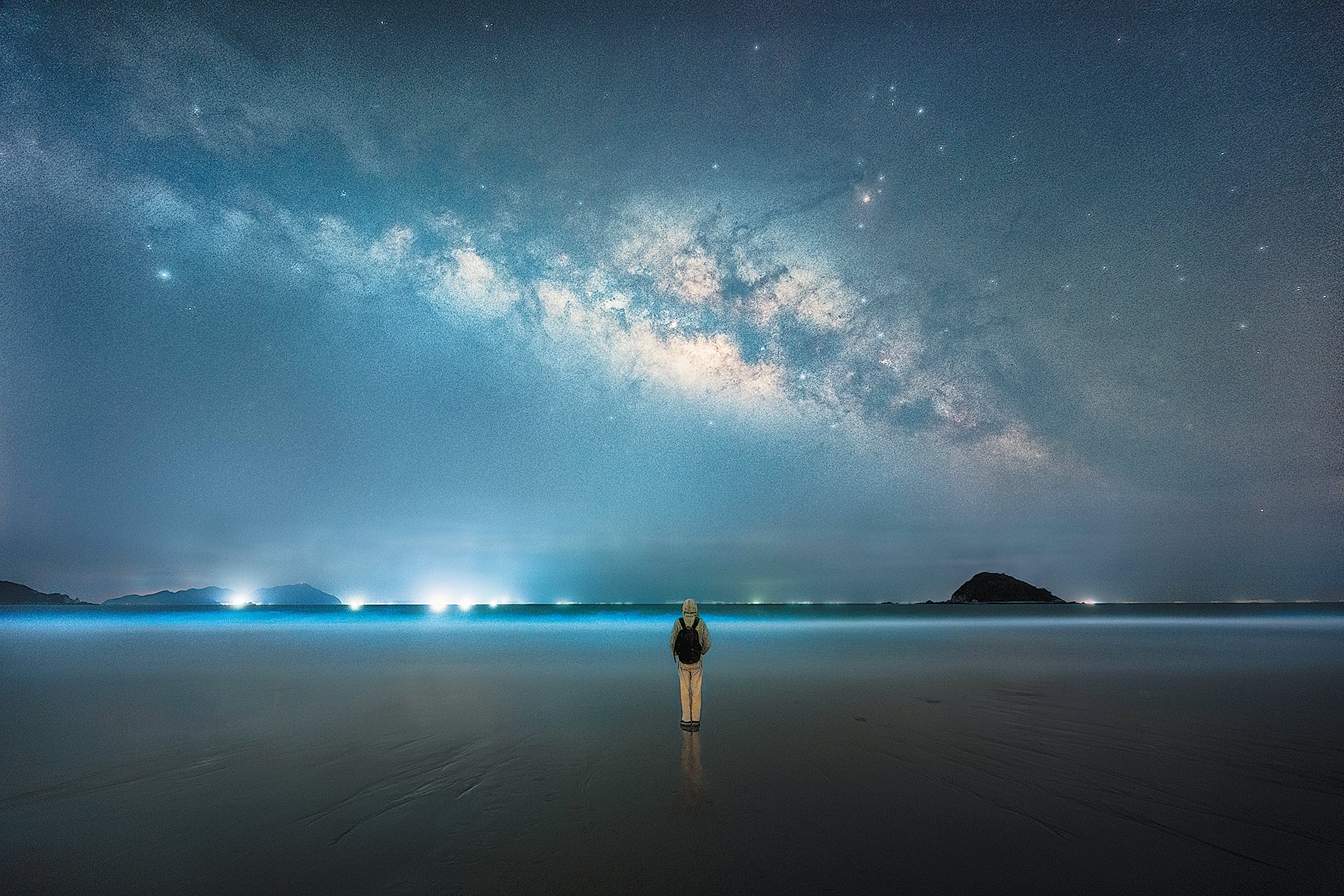Dark sky preservation stepped up in coastal city
THE ARTICLES ON THESE PAGES ARE PRODUCED BY CHINA DAILY, WHICH TAKES SOLE RESPONSIBILITY FOR THE CONTENTS

Xu Guorong, 65, has lived all his life in an area of Shenzhen, Guangdong province, known for its long coastline, beautiful beaches and rolling mountains, which attract travellers from many countries. A resident of the Xichong Community in the city’s Dapeng New Area, Xu likes to lie on the beach when night falls and look up at the stars while listening to waves crashing along the shore.
“It feels as though the entire Milky Way is right in front of your eyes,” he said.
Xu, who runs a seafood restaurant in the community, earning up to 300,000 yuan (£33,381) a year, said: “Local villagers such as myself live on the natural resources of the sea, and thanks to the development of tourism, we have been able to escape poverty and lead better lives.”
He became more optimistic about the future in April, when the community was certified by the International Dark Sky Association, or IDA, as an International Dark Sky Community, or IDSC – the first of its kind in China and only the second in Asia after that in Bisei Town, an administrative district of Ibara, Japan.
The association said an IDSC refers to a town, city, municipality or other legally recognised community that has shown exceptional dedication to preserving the night sky by implementing and enforcing quality outdoor lighting, dark sky education and public support for such skies.
“For a long time, people came to my community for the sea. Now, they have more reasons to visit, including watching the stars. This international certification means the area will be known to a wider audience overseas, and this will attract more tourists and benefit the local economy,” Xu said.
Covering an area of about 4.2 square miles, Xichong Community is approximately 37 miles from downtown Shenzhen. It boasts mountains on three sides, with the other side facing the sea. The area is home to eight natural villages, Xichong Beach – the city’s largest – and Shenzhen Astronomical Observatory. Some 1.6 million tourists visit the community each year.
Attending the certification ceremony in Xichong in April, Ruskin Hartley, CEO and executive director of the IDA, said, “Over the past two years, the Xichong pilot project has built a dark sky community model for other cities across China and around the world.”
He said the community differentiates itself from others, as it has a good mix of astronomical and ecological features. “The certification will be good for the community’s economy. It demonstrates that dark sky protection can go hand in hand with dark sky principles in green urban development as well as harmonious coexistence among humans, nature and the city,” Hartley said.
Construction of a dark-sky community in Xichong started in 2021. As part of the project, the local government renovated lighting and advertising boards in the community. The measures taken included changing to more eco-friendly lighting equipment, reducing luminance, and limiting the time that lighting is switched on.
Research suggests that artificial light at night could negatively affect human health, increasing the risk of obesity, depression, sleep disorders, diabetes, breast cancer and other ailments. Such light also has a devastating effect on plants and creatures, including amphibians, birds, mammals and insects.
Light pollution also wastes energy. The IDA said excess outdoor lighting produces global energy waste equivalent to the output of 2.6 million metric tons of coal and 13.6 million barrels of oil a year.
There are currently 40 certified IDSCs in the world, with more than half of them in the US.
In China, more local governments are working to combat light pollution.
The nation’s first local regulation to protect a dark sky reserve was approved in October, 2022, by the authorities in Lenghu, Qinghai province. The regulation, which took effect at the start of this year, states that the type and intensity of lighting must be strictly controlled.
Many large cities, including Nanjing, Jiangsu province, Chengdu, Sichuan province, and Hangzhou, Zhejiang province, have begun to set up dark-sky zones.
Subscribe to Independent Premium to bookmark this article
Want to bookmark your favourite articles and stories to read or reference later? Start your Independent Premium subscription today.